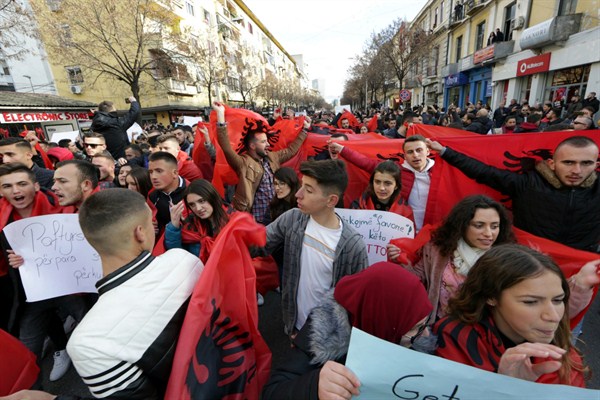Editor’s Note: This article is part of an ongoing series about education policy in various countries around the world.
Beginning in early December, student demonstrators have brought Albania’s public universities to a standstill with protests against the implementation of a law on higher education reforms. Although the government quickly rescinded the extra fees that initially triggered the protests, the students refused to back down, and their demands have since broadened. In an email interview with WPR, Esmeralda Shehaj, associate professor in the Department of Economics at the University of Tirana, and Armando Memushi, lecturer in the Department of Economics at University of Tirana, discuss the students’ grievances and the implications for the government of Albanian Prime Minister Edi Rama.
World Politics Review: What initially motivated so many students to participate in these protests, and how have their demands evolved since they initially took to the streets?

